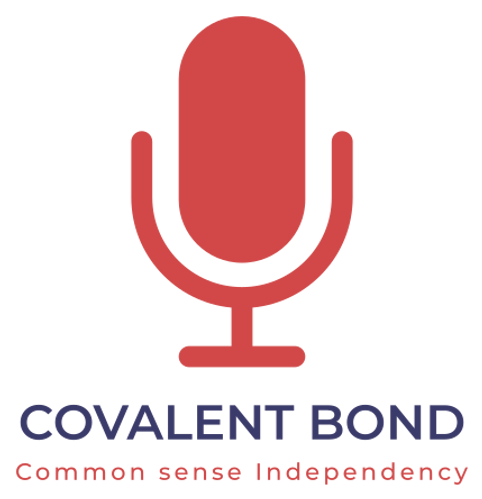Special Terms
7/24/25
By:
Michael K.
How Japan, Indonesia, and the Philippines Secured Tariff Preferences from the United States

In the third decade of July, the United States announced three key trade agreements — with Japan, Indonesia, and the Philippines. Each of these countries managed to avoid a “tariff meltdown” and secure special conditions, despite the White House’s overall course toward raising duties. How did they do it, what did they give in return — and is there a political subtext behind these deals?
Context: The Era of Tariff Ultimatums
In the first decade of April 2025, the administration of Donald Trump announced the introduction of a 10-percent universal tariff on imports. At the same time, a 90-day pause was declared (until July 9) before more severe, individualized tariffs would take effect. On July 7, the U.S. President sent out letters outlining country-specific tariffs, scheduled to take effect on August 1, 2025. As reported by the author of Covalent Bond, Trump sent personal letters to the leaders of 14 countries, offering them “special conditions” in exchange for concessions in market access.
Now, half a month later, it is clear who accepted the challenge and struck a deal.
Japan: Investment Instead of Escalation
On July 23, the United States and Japan signed an agreement to reduce the tariff on Japanese automobiles to 15%. In return, Japan committed to invest $550 billion in the U.S. economy, including the purchase of 100 Boeing aircraft. The agreement also included commitments to increase Japan’s defense spending to $17 billion per year and to purchase American agricultural products.
Markets reacted immediately: the Nikkei index rose, shares of Toyota and Honda surged, and Washington declared a “turning point in the trade balance.”
Indonesia: Market Opening at 19%
The agreement signed on July 22 between the U.S. and Indonesia became the largest of the July trade initiatives. Indonesia agreed to lift over 99% of tariffs on American goods, including food products, automobiles, pharmaceuticals, energy resources, and IT services. In return, the U.S. set a flat tariff of 19% on Indonesian exports — significantly lower than the previous 32%.
According to the official statement from the White House, the agreement also includes the removal of all non-tariff barriers, recognition of FDA and U.S. automotive standards, and the lifting of restrictions on exports of critical minerals and digital flows. Indonesia is joining the Global Forum on Steel Excess Capacity.
Representatives of U.S. agricultural and digital sectors called the deal “groundbreaking” — from the U.S. Dairy Export Council to the Soybean Association and the App Developers Alliance.
The Philippines: Minimal Concessions — Maximum Effect
The agreement with the Philippines, as reported by Reuters, includes a 19% U.S. tariff on Philippine exports — lower than the previously expected 20%. In exchange, Manila agreed to remove tariffs on several key American goods, including automobiles, pharmaceuticals, and industrial equipment.
However, unlike the deals with Japan and Indonesia, the agreement with the Philippines does not yet cover the agricultural sector. Tariffs on imports of American rice, corn, and meat products remain in place — a point of criticism from U.S. agricultural lobbies.
General Logic: Whoever Pays, Wins
A close comparison of the three deals shows that the 19% tariff has become a new template in U.S. trade policy. But behind this formal figure lies a varying degree of concessions. Indonesia opened almost its entire market and adopted American standards. Japan invested heavily and pledged support in the defense sphere. The Philippines took limited steps — and received limited access.
The principle of “equal rate, unequal concessions” allows the U.S. to apply a unified formula while maintaining flexibility in negotiations. Each country paid — either with market access, political loyalty, or direct investment.
Political Dimension
All three deals involve countries from the Indo-Pacific region. Against the backdrop of geopolitical pressure on China, the U.S. is building an economic belt of allies — relying on bilateral agreements rather than multilateral institutions.
Trump’s separate statements about a possible visit to Beijing and “a new phase in trade talks with the PRC” only underscore the point: each signed deal is not just about economics, but about containment.
Industry and Ally Reactions
American agricultural associations — from the U.S. Grains Council to the National Meat Producers Federation — called the deals with Indonesia and the Philippines “the breakthrough of the decade.” Special praise was given for the removal of barriers in the digital services sector, which had long limited U.S. companies in Southeast Asia.
However, voices of discontent emerged from the industrial sector and among automakers: the deals with Japan and the Philippines, in their view, create unequal conditions compared to the terms of the USMCA — the agreement between the U.S., Canada, and Mexico.
Conclusion: An Unspoken Deal Template
The agreements with the three countries are not isolated exceptions, but rather a trial framework for the new U.S. tariff policy. Establishing “standardized” rates followed by individual trade negotiations has become a way to turn threats into bargaining tools.
Today, 19% is not just a number. It is a marker by which Washington offers a deal: open your markets, recognize U.S. standards, pay politically — and receive relief.
Who Was Left Behind
▪️ EU: subject to a 30% tariff starting August 1; risk of increase to 35% if concessions are not made.
▪️ United Kingdom: facing a 25% tariff threat from August 1; negotiations are currently frozen.
▪️ South Korea: under threat of 25% tariffs starting August 1; active negotiations are underway, but no deal has been signed yet — in contrast to the EU and Japan, which have finalized agreements.
▪️ India, Canada, Mexico, and Brazil also remain outside any formal deals, though some are in talks (for example, negotiations with India are ongoing, with the U.S. threatening tariffs of up to 30–50%).
Who’s Next? The EU, the UK, possibly India. But the boundaries are already drawn.
Latest news



